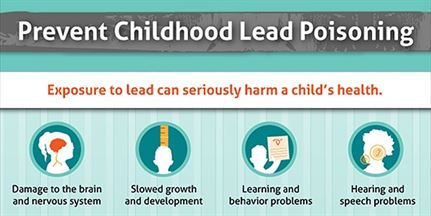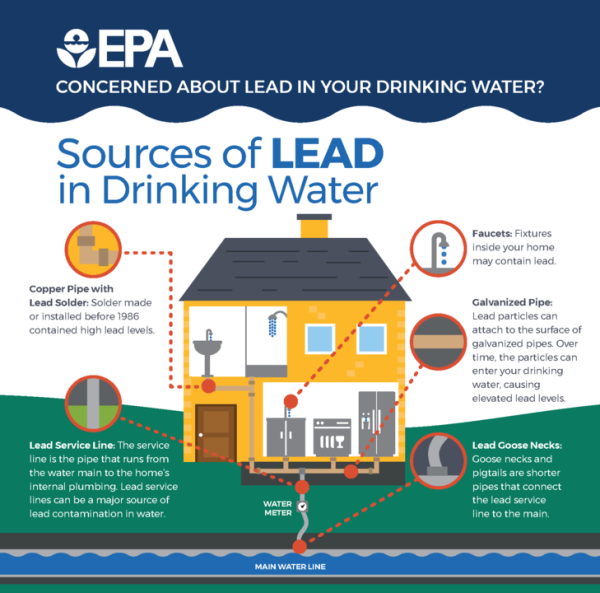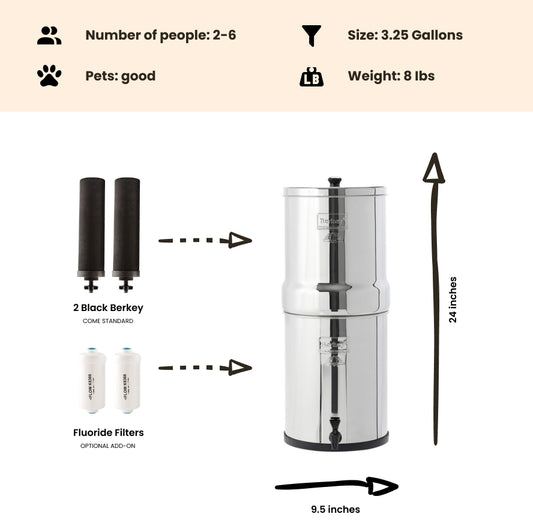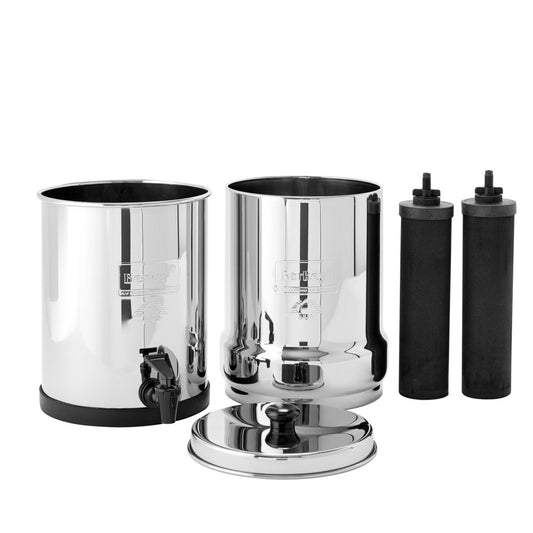
Lead in Drinking Water: What are the Health Risks and How to Remove It?
By Dan DeBaunShare
Discovering that the drinking water supplied to your home is contaminated with lead is an alarming realization. As most know now, lead is a heavy metal that poses a significant health risk to your family. Because lead is not readily detected in water as you can't see, smell or taste it, if you suspect your water supply may contain lead, you will need to have it tested. This article explains how lead gets into drinking water, what the health effects of exposure to lead are, how to find out if your water is contaminated with lead, and if so, how to get rid of it.
Sources of Lead in Drinking Water
Much of the lead contamination found in drinking water originates from lead pipes and plumbing fittings installed in older buildings built pre-1986, when the use of lead in the construction of buildings was banned. As water flows through lead pipes, lead and other contaminants can leach from the old decaying pipes to contaminate the water, particularly if the water passing through these pipes is highly acidic, and therefore more corrosive. Other sources of lead contamination in drinking water include lead based-paint used in older homes, which can chip or flake over time, resulting in toxic lead dust that can get into water used for drinking, cooking or bathing; as well as lead-rich soils, which can leach into the water as it passes through the soil before reaching your home.
Is it Safe to Drink Water Containing Lead?
The US Environmental Protection Agency considers lead to be so toxic that their recommended level in drinking water is zero. However, regulatory levels for municipal water supplies are currently set at 15 parts per billion. In accordance with the EPA's Lead and Copper Rule, if drinking water supplied to 10% of a water utility's consumers exceed these safety levels, they are compelled to issue a public warning, providing consumers with information as to how they can protect themselves from exposure. They may also be forced to replace any lead water pipes that they are responsible for. For bottled water, which is regulated by the Food and Drug Administration (FDA), the safety limit for lead is much lower, at under 5 parts per billion.
How Widespread is the Problem?
According to data extracted from the EPA's Safe Drinking Water Information System (SDWIS) in 2016, 2000 water systems supplying more than 6 million Americans contained dangerously high levels of lead over a 4-year period. In Flint, Michigan, residents were recently exposed to toxic levels of lead as city managers failed to control corrosion in their water lines, while in Newark the methods the city used to control corrosion were ineffective.
How Does Lead Affect Your Body?
Ingesting lead can have serious health implications to both children and adults. Lead exposure can cause irreversible neurological damage and negatively impact development in infants and young children. It can also result in lead poisoning with severe consequences such behavioral, developmental and learning problems, and can also compromise the body's immune system. In children, it can impair hearing, cause stunted growth, and lead to anemia. Pregnant women exposed to lead can give birth prematurely, and the fetus may be underdeveloped. Other health impacts in adults include reproductive, kidney and cardiovascular problems, as well as loss of appetite, weight loss, stomach pains, constipation, vomiting, irritability and seizures.
Can Lead Get into the Body Via the Skin While Bathing or Showering?
No, your skin cannot absorb lead present in water. It is therefore safe to wash in water that is contaminated with lead. However, the overall health risk will ultimately depend on how much lead is in your water, other health issues an individual may have, and whether water is inhaled or ingested while showering or bathing.
Which Individuals Face a Higher Risk of Getting Lead Poisoning?
Certain groups face a higher risk of lead poisoning that the rest of us. Young children face a much greater risk than adults, largely due to the fact that they tend to put things they pick up into their mouths. Expectant mothers are another high risk group, facing a grave risk of miscarrying or giving birth prematurely. Moms-to-be as well as mothers who breastfeed their babies can pass on lead to their infants, where it can damage their baby's nervous system and organs.
How Can You Find Out Whether Your Water Supply Contains Lead?
Because lead is tasteless, colorless and odorless in water, it is impossible to know whether your water is contaminated with lead without testing for it. There are several ways of testing your drinking water to find out whether it is safe or not:
- Send a water sample to a certified lab for testing. They will provide a comprehensive analysis of what is in your water.
- Purchase a home water testing kit capable of determining if your water contains lead. This is a cheaper and more convenient alternative to sending a water sample to a lab for testing. However, while they are capable of detecting lead in water, they do not indicate the levels, so if lead is present, you will not know how much is in your water. Contact your local municipal office to see if they will oblige.
- Get your water supplier to test your water. As the quality of water municipalities supply consumers is ultimately their responsibility, many municipal water suppliers will happily test your water free of charge.
- Seek advice from a professional water consultant who can help identify specific water issues and provide solutions to address any health issues that may arise due to poor water quality.
My Water Contains Lead — Now What?
If your water tests positive for lead, there are several things you must and mustn't do:
Do:
✓ Turn the tap on and let water run for a bit to flush lead from your pipes.
✓ Only use cold water for cooking as lead leaches more readily from pipes as hot water flows through them.
✓ Invest in a good quality water filter that is capable of removing lead.
✓ Provide your children with filtered water or a filter water bottle, such as the Sport Berkey, to take to school if the city water supply contains lead.
Don't:
✓ If your water supply is contaminated with lead, don't boil the water in order to render it safe to drink. While boiling will kill bacteria and other pathogens, it will not remove lead. In fact it can make it even more concentrated as some of the water evaporates as steam.
✓ Since lead is not absorbed by the skin, it is okay to bathe or shower, however don't inhale or ingest the water while washing.
✓ Lead is a highly toxic heavy metal that can have severe health implications. Don't take unnecessary risks. Ensure that you take precautions to prevent exposure before you start feeling the negative effects.
How Do I Reduce My Exposure to Lead in Drinking Water?
To sum up, you need to take the following steps in order to ensure the water you and your family are drinking is lead-free:
- Test the Water — Have your water tested to see if lead is present, and if so, at what levels.
- Identify the Source — Identify where the lead is coming from. It is important to determine the source of the lead so that you can take measures to minimize it if necessary. Have a closer look at the water pipes that provide your household with water. It is easy to distinguish copper and plastic pipes from lead. If your home has metal pipes, scratch the outer surface of a pipe with a sharp object. On lead pipes, the scratch will leave a white mark, in which case you may want to consider getting a plumber to replace them at some point to prevent long-term exposure.
- Filter the Water — Replacing the water pipes in your home can be a costly exercise. A cheap and effective solution is to invest in a berkey water filter capable of filtering the lead out of the water before you drink it.
By following these simple tips to limit lead exposure, you can take big strides in protecting your family's health and well-being.
-
Regular price $234.00 USDRegular priceUnit price / per
-
Regular price $327.00 USDRegular priceUnit price / per
-
Regular price From $367.00 USDRegular priceUnit price / per
-
Regular price From $408.00 USDRegular priceUnit price / per
-
Regular price From $451.00 USDRegular priceUnit price / per
-
Regular price From $478.00 USDRegular priceUnit price / per
-
Regular price $332.50 USDRegular priceUnit price / per
$350.00 USDSale price $332.50 USDSale

Dan DeBaun
Dan DeBaun is the owner and operator of Big Berkey Water Filters. Prior to Berkey, Dan was an asset manager for a major telecommunications company. He graduated from Rutgers with an undergraduate degree in industrial engineering, followed by an MBA in finance from Rutgers as well. Dan enjoys biohacking, exercising, meditation, beach life, and spending time with family and friends.
~ The Owner of Big Berkey Water Filters

















